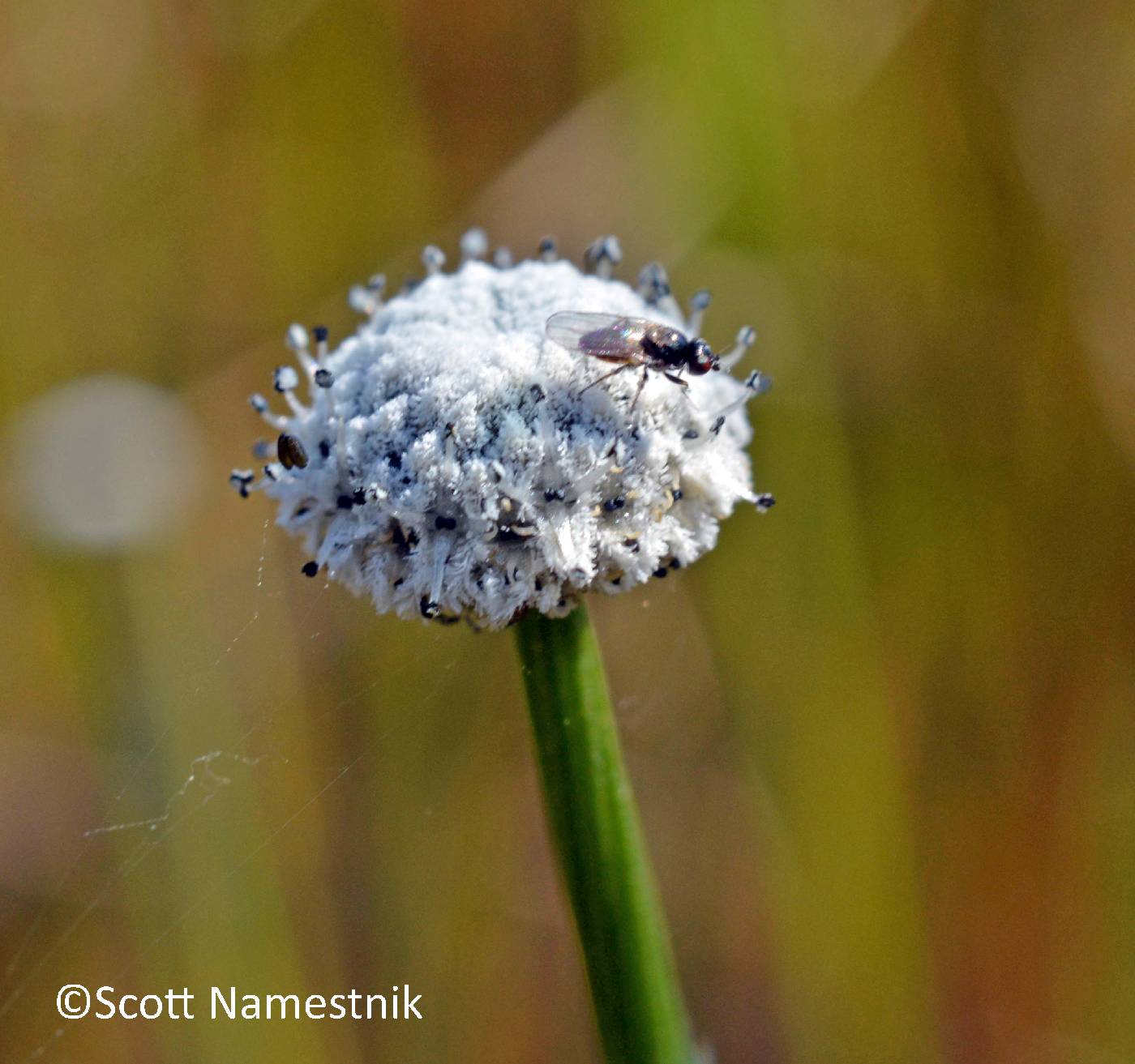
|
Eriocaulaceae |
|
|
Herbs, annual or perennial, cespitose or solitary, rosulate, rarely caulescent, mostly scapose, glabrous or variously pubescent with simple or compound hairs. Rootstocks rhizomes or stems, thickened, short to variously elongate; roots fibrous, spongy, or spongy-septate (diaphragmatic). Stems erect to repent or prostrate, axis sympodial or monopodial, sometimes branching. Leaves mostly many ranked in rosettes, sometimes in loose spirals, mostly grasslike; blade linear to linear-triangular, lingulate, tapering, base mostly clasping; veins parallel. Inflorescences terminal and/or axillary, simple [compound], involucrate [proliferative], buttonlike or short-cylindric; scape sheaths spathelike, tubular, enclosing scape base, distally open; scapes 1--many, simple [compound], terete, usually twisted, mostly multiribbed; involucral bracts spirally imbricate series, usually chaffy or scarious, grading inward to receptacular bracts or these absent; receptacle glabrous or variously hairy. Flowers (florets) unisexual, staminate and pistillate on same [rarely different] plants, radially or bilaterally symmetric; sepals 2--3, distinct or variously connate, diverging from stipelike base or merely part of lobeless column; petals 0 or 2--3, diverging from short to elongate stipe (part of androphore or gynophore) or merely part of lobeless column; stamens 2--4(--6), often unequal; filaments arising from floral axis, rarely epipetalous; anthers mostly black, 1--2-locular, 2--4-sporangiate, versatile or basifixed, dehiscence longitudinal; pollen 1-grooved, 3-nucleate; appendages present in some flowers, glandlike or peglike, rarely bladelike, sometimes fringed or variously cleft; pistil compound, 2--3-carpellate; ovary superior, raised on gynophore, 1 locule per carpel; ovules 1 per locule, adaxial-apical, pendulous, orthotropous, bitegmic; style terminal, appendaged or unappendaged, 2--3-branched, branches simple or apex rebranched. Fruits capsules, thin-walled, loculicidal. Seeds translucent, ovoid, ellipsoid, or broadly fusiform, mostly 1 mm or shorter, variously ribbed or sculptured; endosperm copious, mealy-starchy, with compound starch grains; embryo apical. Most Eriocaulaceae grow in full sun in acidic wet soils or in aquatic situations.
|
|
This project was made possible in part by the Institute of Museum and Library Services [MG-70-19-0057-19].
Powered by Symbiota


